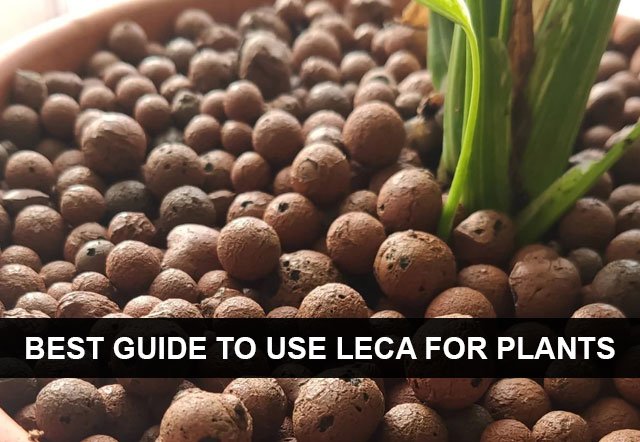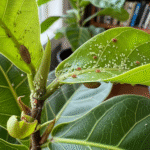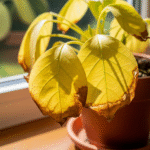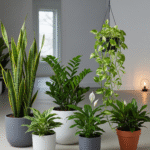What comes in your mind when a plant name celery passes through your thoughts?
Basically, a celery is a plant that can be perfect to place in your garden so that you can get a fresh and healthy vibe from its sharp and vibrant green color. Celery is an eatable plant that you can freshly pluck up from your garden after your morning walk to use it for your salad. If you are shaping your body you can drink fresh celery juice in the morning by squashing it up with any fruit.
Celery has numerous health benefits as it is rich with vitamins and minerals. The vitamins you will get from celery are vitamin A, K and C with low blood sugar index.
Celery plants are popular because of its versatile use in home kitchen as these plants add a burst of taste in soups, salads and even used in stir-fries. These plants can also be eaten raw or cooked by stewing.
The wild celery plants are mostly found on the marshy ground. You can also find these plants on riverside because these plants favor a soil that remains moist.
Celery plants are often seen in gardens and parks. The vibrant green color of this plant gives a fresh look to your garden. It is a cool weather plant that requires 16 weeks of cool weather. The leaves of celery arrange in cone shape that are joined at a common support.
Tip: if you want to get the best taste of celery plant, try to harvest these plants in your garden so that you can get the freshest and coolest taste in soups and salads.
Where to grow Celery
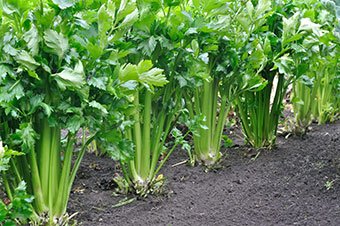
You can grow celery plants in your garden but hang on, it takes a lot of time and care to grow these plants properly.
Location: The placement of celery plant is on top of the chart as these plants prefers cool temperature. It is important to harvest these plants in a cooler place instead of locating it under direct warm heat of sun.
Tip: I will recommend you to plant celery where the growing season has 4 months of cold weather.
Soil: Grow celery plants in some soil rich with moisture. If you are harvesting the celery plant in your garden, then make sure you should water it regularly.
PH: The PH of the soil will remain between 5.8 to 6.8. In this PH, the growth of celery plants will progress evenly and you will get a healthy celery.
Dos and don’ts of Celery
If you are growing celery in your garden, then you should follow these dos and don’ts.
Dos
- As we know that celery is a cool weather plant, it requires 16 weeks of cold weather to get healthy celery. The temperature should remain between 10 to 30 degree Celsius.
- In warm areas like Africa or mostly in Asia, plant celery in the late summer so you can harvest celery in early winters.
- In cool areas like Norway etc., plant celery in the start of springs.
- During the growth of celery, water it regularly so that these plants grow properly.
- During midseason, add fertilizer in the beds of celery before planting.
- You should keep the cultivation shallow so that it will not damage the roots of the plant.
- For avoiding bitter taste, blanch celery.
Don’ts
- Avoid growing celery with pumpkins and cucumbers.
- Avoid celery from growing in an area where the weather remains warm.
- Avoid to use heavy pesticides in celery plant beds.
- Blanching of celery will result in short or no roots, if it sits too long on the plant.
- Slugs and leaf miners can attack celery during blanching so don’t try to blanch celery if it is not necessary.
Celery companion plants
Celery plants are an amazing species of plant that can be flavorful when you pluck it from your garden. It is important to know that which companion plant grow well with celery but first of all, you should know the meaning of companion planting.
What is companion planting?
“Companion planting is a technique that helps other plant to grow with them when planted near each other. With the help of this movement, you get the best growth of plant that is placed or attached near the companion plant. Companion planting also reduces the amount of pesticides used to increase growth rate in your garden and decreases the effort it takes to keep your garden pest free.”
Companion planting for celery
Companion planting is the best gardening hack that can be used to plant celery. Planting crops together can improve your garden’s ecosystem as it reduces the use of harmful pesticides in your garden. The main thing which I want to mention is that , firstly, you should have a proper knowledge about the companion plants for celery.
Pro tip: Many other species of plants grow well in a garden bed with celery but some plants grow with harmful consequences. So, you have to make sure which companion plant grow well with celery by researching carefully about what are good companion plants for Celery?
What are good companion plants for Celery?

There are many Vegetable plants that grow rapidly with celery in your garden. Some of them are as follows:
- Beans. Bean beetles are the major cause of destruction of the celery. If you combine celery with beans, it will distract away the beetles to eat beans and, in this way, you will get your pure form of celery.
- Spinach. Celery helps to protect spinach from pests that loves to feed on spinach. Both of these plants requires the same moisture level of planting bed, making similar growing conditions.
- Tomatoes. Celery when combines with tomato reduces the growth of pests in beds.
- Onions. We all know that onion family has a strong stinging smell which strikes away bugs and pests. Combining celery with onion family improves the flavor of celery.
- Cabbage family. Celery pushes back pests and other cabbage eating insects from the beds and increases the growth rate of the cabbage.
- Cucumber. In cucumber, you can definitely see whiteflies around this plant. To overcome this hurdle, nestle some celery plants around your cucumber soil. It also protects cucumber from weeds and helps to grow a fresh and healthy cucumber in your garden.
Tip: if you want to grow celery in your garden, try to plant these veggies with celery to get good results. Your garden will glow like a moon and you will not face any harmful consequences.
Companion flowers for celery
Thinking about companioning flowers with celery?
Some of the most loved flowers can be planted in the same bed to celery. the main reason of planting flowers with celery is to showcase different colors in your garden. Another reason of planting lovely flowers with celery is to drive away many pests that can cause serious damage into your crops.
These charming flowers attracts predators that are very beneficial for healthy growth of celery.
You should consider these companion flowers for celery.
- Snap dragons
- Sunflowers
- Cosmos
- Daisies
Note: Are you looking for planting best companion flower for celery?
Well, in that case, we have got you covered as the expert says that Sunflowers and Snap dragons are the best companion flowers for celery because these flowers invite beneficial pollinators that can fight against the harmful pests.
Herbs to grow with celery
Due to nutrition’s and strong smell of herbs, celery plants can produce fresh and healthy celery. The strong smell of herbs force insects to move away and nutrients help in the growth of crispy and healthy celery.
Planting herbs close to celery attract butterfly’s and other beneficial pollinators that helps to ascends the yield in your garden.
Herbs that you plant near celery are
- Rosemary
- Oregano
- Sage
- Basil
Pro Tip: if you have seen a garden of celery, you have definitely looked at the companion plants beside celery and most of the time, you will find herbs as a companion plant. So, my advice to you is to plant any type of above mention herb and get pure celery for yourself.
Bad companion plants for celery

What are bad companion plants for celery is the question which everyone wants to know before planting celery in their garden.
Here is a brief guide about non-companion plants for celery.
- Potatoes family. The harvesting time of potato is different from celery because at that time, celery is in full growth. These two plants are bad companion to each other.
- Corn family. firstly, Corn fields are taller in length which fluctuates the growth in celery. Secondly, corn is feeds nutrients in the soil heavily which effects the growth of celery. These are the 2 main reasons to avoid corn companioning with celery.
- Turnips and other root vegetables. They also have the same harvesting issue as potatoes. you can pluck root veggies around the celery because celery has shallow roots.
- Carrot family. During the harvesting of celery, these plants disturbs the roots of celery as celery has insubstantial roots. The pest issue in carrot family is very high which increases the risk of damaging celery. So, you should avoid carrot family for companioning.
Tip: if you want your garden pest free then try to plant pollinator-friendly varieties because these plants have beneficial insects that can fight with harmful insects and pests.
5 Types of celery that are super delicious
1. Conquistador Celery
The most delightful type of celery that is rich with sweet and pure taste. Conquistador can be used in fresh salad to get a little sweetness with crunch.
In cold areas, it takes approximately 118 days to become a mature plant and in warm areas, it only need 80 days to become an eatable plant.
2. Pascal Celery
Pascal celery is one of the most used celery in the US which has a different taste from all other types of celery. most of the people love to have them during their breakfast or after the morning walk.
It takes about 120 to 130 days to become a mature plant and prefers a cold atmosphere. The suitable temperature for Pascal celery is between 50 to 60 degree Fahrenheit.
3. Marble ball celery
In the US market, you will mostly found Marble ball celery as it has a round shape roots which have sweet taste and makes your recipe even tastier.
General growth of marble ball celery is up to 7-inches in diameter and take 90 to 120 days to harvest. If you are a soup lover, then you should try Marble ball celery roots soup because it is very tasty and is rich with full of nutrients.
4. Celeriac
Celeriac is a type of celery that you mostly find the 8 and 9 zone of USDA. It has a delicious root that can be use in soup making and fresh salad.
In your garden, you can grow celeriac but be patent, it takes 120 days to grow. In diameter, it is about 4 inches with long leafs and a circular shape roots.
5. Golden Pascal celery
Golden Pascal celery is a French type of celery mostly found in cool regions. It has a yellowish-green color stalks that are rich with tenderness and juice.
It approximately takes 120 days to become a harvestable plant. It increases about 18-inches in length with beautiful mixed golden texture color. This plant can endure your home kitchen with is delicious taste and your garden or backyard with look beautiful and colorful.
Beware: you should beware of growing wild celery because you can’t eat wild celery as it contains some harmful effects on your health. The types of celery we eat is much different as compared to wild celery as most of the wild celery plant grows under water in ponds etc.
How to blanch your celery?
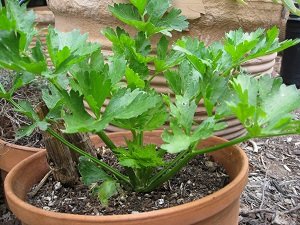
Many people ask about the blanching of celery. Is it mandatory or not?
Well, blanching reduces the vitamins and mineral present in any plant but experts says that if you are growing your plant in a garden then, you should blanch your plant to gain more tenderness in your plant.
In the case of celery, some types of celery need blanching while other doesn’t need to be blanched.
There are 2 methods to blanch celery.
Method 1
To blanch your celery, firstly, try to build stack around celery. Secondly, add a fresh dirt on the daily bases. In this way your celery will blanch at the time of harvesting.
Method 2
To blanch your celery, try to hide or wrap the lower part of your celery with any kind of thick paper material 2 to 3 weeks before harvesting celery.
Note: if you are looking for indoor celery plants, then there are some types of celery plants that can be grown indoor but if you take my advice, then I will advise you not to plant celery indoor because it has a stinging smell which will destroy your home environment.


